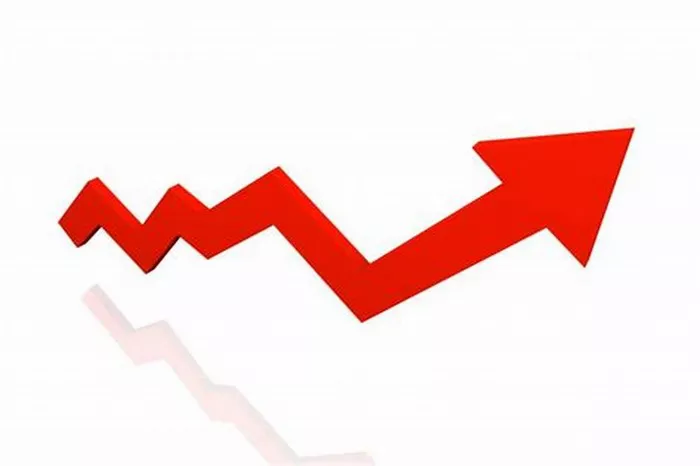The cruise industry was significantly impacted by the COVID-19 pandemic. The global lockdowns and travel restrictions led to a near-complete halt in cruise operations. Consequently, cruise stocks experienced dramatic declines. As the world slowly recovers from the pandemic, investors are keen to know when cruise stocks will recover. This article provides an objective analysis of the factors influencing the recovery of cruise stocks and offers insights into the potential timeline for recovery.
The Impact of the Pandemic on Cruise Stocks
Initial Shock and Lockdowns
The COVID-19 pandemic’s onset in early 2020 caused widespread panic in the financial markets. Cruise stocks were among the hardest hit, with major cruise lines such as Carnival Corporation, Royal Caribbean, and Norwegian Cruise Line experiencing precipitous drops in their stock prices. The industry’s high fixed costs and the complete suspension of operations exacerbated the financial strain.
Prolonged Suspension and Cash Burn
Cruise lines faced an extended period of inactivity, leading to significant cash burn. With no revenue coming in, companies had to raise capital through debt and equity offerings to stay afloat. The increased debt levels and dilution of shares negatively impacted stock prices and investor sentiment.
Regulatory Hurdles
Governments and health authorities imposed stringent regulations on the cruise industry to curb the spread of COVID-19. These included mandatory quarantines, testing requirements, and capacity restrictions. Compliance with these regulations added to the operational costs and complexity, further delaying the industry’s recovery.
Factors Influencing Cruise Stock Recovery
Vaccine Rollout and Herd Immunity
The widespread distribution of COVID-19 vaccines is a critical factor in the recovery of the cruise industry. Vaccination rates and the achievement of herd immunity levels will influence the resumption of cruise operations and consumer confidence.
Impact of Vaccine Efficacy
The efficacy of vaccines against emerging variants of the virus is also crucial. High vaccine efficacy will boost consumer confidence and reduce the likelihood of future outbreaks on cruise ships, leading to a faster recovery.
See Also: 7 Stocks That Performed Well During War
Booster Shots and Future Vaccinations
The availability and administration of booster shots will play a role in maintaining immunity levels and ensuring the sustained recovery of the cruise industry.
Easing of Travel Restrictions
As vaccination rates increase and COVID-19 cases decline, governments are likely to ease travel restrictions. The lifting of restrictions on international travel and the relaxation of quarantine requirements will positively impact cruise bookings and revenue.
Role of Travel Corridors
The establishment of travel corridors between countries with low COVID-19 infection rates will facilitate the resumption of cruise operations and boost consumer confidence.
Consumer Confidence and Demand
The willingness of consumers to return to cruising is a key determinant of the industry’s recovery. Factors influencing consumer confidence include:
Perceived Safety
Consumers need to feel safe while cruising. The implementation of health and safety protocols, such as enhanced cleaning measures, onboard testing, and vaccination requirements, will influence their perception of safety.
Economic Factors
Economic recovery and disposable income levels will impact consumers’ ability to afford cruises. A robust economic recovery will likely lead to increased demand for cruise vacations.
Financial Health of Cruise Companies
The financial stability of cruise companies is critical for their recovery. Factors affecting their financial health include:
Debt Levels and Liquidity
High debt levels incurred during the pandemic will impact cruise companies’ ability to invest in growth and expansion. Maintaining adequate liquidity to cover operational costs and service debt is essential.
Cost Management
Efficient cost management and operational efficiency will be crucial for cruise companies to achieve profitability. This includes optimizing itineraries, managing fuel costs, and reducing overhead expenses.
Timeline for Recovery
Short-Term Outlook (2024-2025)
Gradual Resumption of Operations
In the short term, cruise companies are expected to gradually resume operations. The pace of recovery will depend on vaccination rates, the easing of travel restrictions, and consumer confidence.
Revenue Recovery
Revenue recovery will be incremental as capacity restrictions are lifted and more ships return to service. Promotions and discounts may be necessary to attract customers initially, impacting profit margins.
Stock Performance
Cruise stocks are likely to remain volatile in the short term. Investors should expect fluctuations based on news related to COVID-19 variants, regulatory changes, and quarterly earnings reports.
Medium-Term Outlook (2025-2027)
Increased Capacity Utilization
By the medium term, cruise companies are expected to achieve higher capacity utilization as travel restrictions ease and consumer demand returns. This will lead to improved revenue and profitability.
Debt Reduction
Cruise companies will focus on reducing their debt levels and strengthening their balance sheets. Successful debt reduction efforts will improve investor confidence and support stock price recovery.
Stock Performance
Cruise stocks are expected to show a more stable and upward trend in the medium term. Improved financial performance and positive industry outlook will attract long-term investors.
Long-Term Outlook (2027 and Beyond)
Full Recovery and Growth
In the long term, the cruise industry is expected to fully recover and return to growth. Innovations in ship design, onboard experiences, and destination offerings will drive demand.
Expansion and Diversification
Cruise companies will explore new markets and diversify their offerings to attract a broader customer base. Investments in sustainability and eco-friendly practices will also play a role in long-term growth.
Stock Performance
In the long term, cruise stocks are likely to outperform as the industry recovers and expands. Strong financial performance, coupled with growth opportunities, will attract institutional and retail investors.
Conclusion
The recovery of cruise stocks is dependent on multiple factors, including the successful rollout of vaccines, the easing of travel restrictions, consumer confidence, and the financial health of cruise companies. While the short-term outlook remains uncertain and volatile, the medium-term and long-term prospects for the industry are positive. Investors should adopt a cautious yet optimistic approach, keeping an eye on key developments and market trends.
By understanding these factors and monitoring industry progress, investors can make informed decisions and potentially benefit from the eventual recovery of cruise stocks. The journey to full recovery may be gradual, but the cruise industry’s resilience and adaptability will play a crucial role in navigating the path ahead.
Related topics:





























